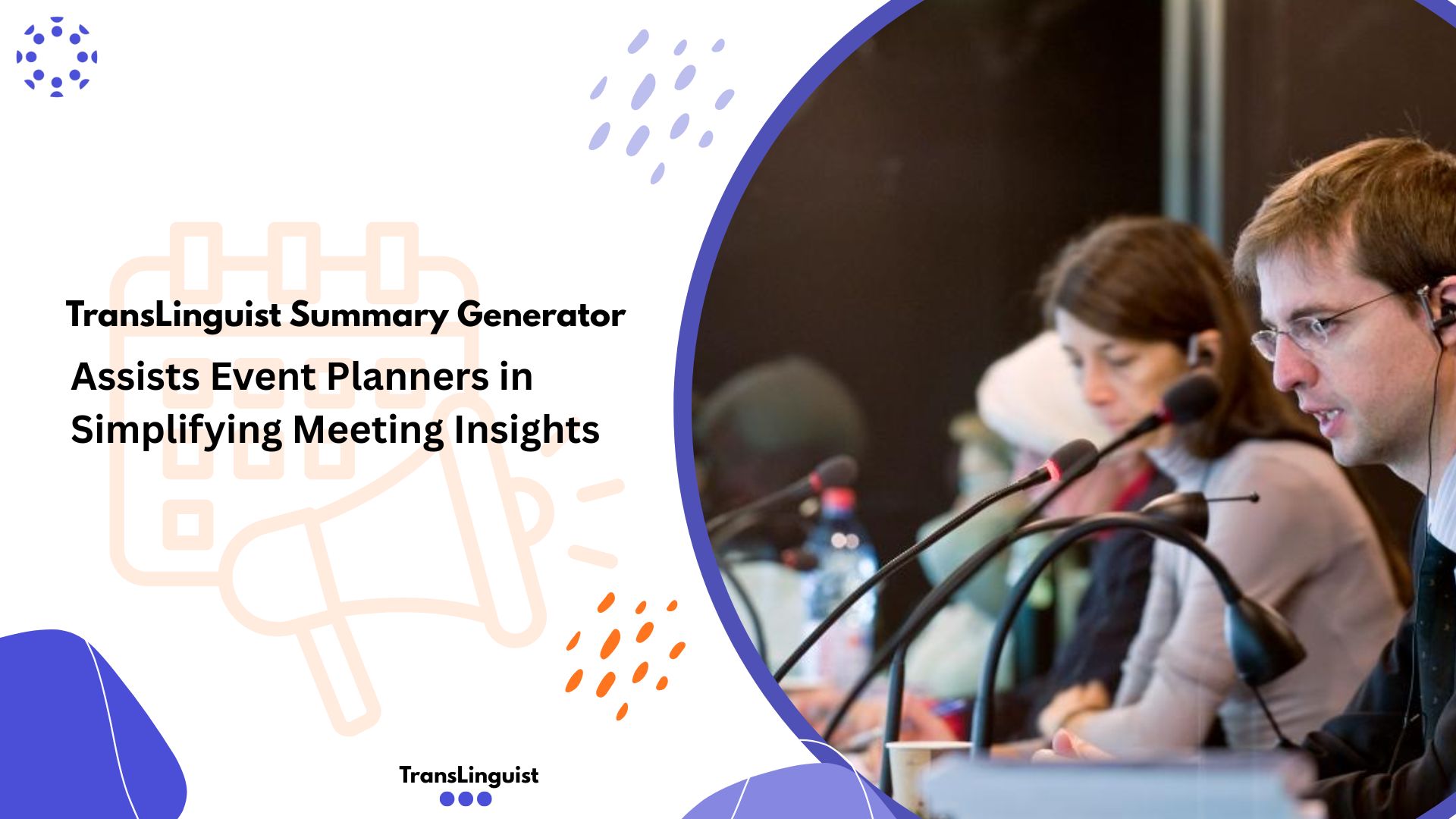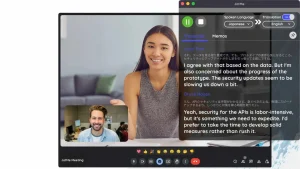Event teams are drowning in talk tracks, chat threads, and slide notes, yet decisions still hinge on what people remember afterward. The Translinguist Summary Generator turns that chaos into clear, shareable takeaways. Built on TransLinguist Speech AI and supported by human editors, the TransLinguist Summary Generator listens during sessions, aligns content with your terminology, and delivers concise narratives that people can act on. For briefings, trainings, and multi-track conferences, the TransLinguist Summary Generator helps planners publish accurate summaries without losing the energy of the live moment.
Why event planners need structured summaries now
The volume problem that follows the scale
Hybrid programs invite more voices. Town halls, breakout rooms, and Q&A segments produce hours of audio for every hour of agenda time. Without structured summaries, teams replay recordings and still miss decisions. TransLinguist solves the volume problem by pairing real-time capture with post-session synthesis. Speech-to-text creates a reliable base. Editors shape the notes into key points, action items, and follow-ups that read like they were written for the audience in the first place.
Why clarity beats raw transcripts
Transcripts are useful, yet they are not the finish line. Planners need digestible summaries for executives, compliance, and attendees who could not join. The generator organizes content by session and speaker, then resolves acronyms, dates, and names using your glossary. Searchable notes make recaps faster to review and safer to file. That balance aligns with how TransLinguist describes Speech AI and post-event deliverables across its product and blog pages.
How the TransLinguist Summary Generator works
From speech to insight in three steps
First, the platform captures audio and turns it into readable text during the session. Second, neural translation and captioning keep cross-language audiences in sync. Third, the generator builds a concise narrative that highlights decisions, risks, owners, and deadlines. For multilingual events, summaries are produced in the target languages your plan requires, so every region receives a version that feels native. These steps reflect existing Speech AI and caption capabilities that TransLinguist already offers for meetings and events.
Terminology and style that travel with you
Names of products, legal clauses, clinical terms, and interface strings come from a living glossary. The generator uses this reference to normalize spelling, expand acronyms, and keep tone consistent. Editors can add short context blurbs when a topic needs clarification. This approach mirrors TransLinguist guidance on pre-seeding terminology and using quality checks to focus effort where it matters most.
What makes the summaries useful after the event
Formats that fit your workflow
Event planners can request a one-page executive recap, a detailed session summary, and a consolidated conference report. Caption-aligned timestamps let reviewers jump from the summary to the exact moment in the recording. For training libraries, subtitles and translated summaries make replay sessions usable for people who prefer reading to listening. TransLinguist has repeatedly highlighted captions, subtitles, and transcripts as assets that extend the life of content.
Metrics leaders actually use
Teams typically review attendance, language selection, watch time, and questions asked. When subtitles and summaries are posted quickly, follow-up tickets drop, and knowledge sharing improves between departments. TransLinguist recommends tracking these signals to prove value and guide rollouts. The generator supports that discipline by delivering structured outputs that map cleanly to your review process.
Answers to the questions planners ask most
How accurate are the summaries compared with manual notes
Accuracy begins with clean speech recognition and improves with domain-aware editing. TransLinguist Speech AI is designed for real-time understanding, and the company describes accuracy ranges that depend on accent and audio quality. The summary workflow adds human checks to correct names, numbers, and decisions before publication. For high-risk sessions, many clients ask editors to cross-check against the transcript and slide deck.
What is the difference between an automated summary and a curated report?
An automated summary is fast and highly useful for internal sync. A curated report adds editorial framing, clearer headline messages, and policy-sensitive wording suitable for wider release. Planners can request either outcome at the outset, which keeps timelines and expectations aligned with stakeholder needs. This choice reflects the human-in-the-loop model TransLinguist promotes across its services.
Where the Summary Generator fits across sectors
Conferences, training, and enterprise briefings
Multi-track agendas generate content that deserves to live beyond a single day. The generator produces session recaps, highlights, and multilingual digests that marketing and learning teams can repurpose across channels. This builds on the company’s focus on real-time translation, captions, and accessible recordings for global audiences.
Healthcare, public sector, and legal
Some sessions require extra care. For clinical education and public briefings, summaries help keep instructions consistent across languages. For court-adjacent or compliance-heavy moments, the automated draft is reviewed by specialists before release. This mirrors TransLinguist guidance that automation supports scale while experts protect intent in sensitive contexts.
A simple rollout plan for the United States event teams
Start with one flagship meeting
Pick a monthly town hall or a high-visibility training. Turn on captions, run Speech AI, and request executive and attendee summaries. Compare attendance, watch time, and repeat questions with the previous cycle. Expand only after the results show a lift. That measured approach is consistent with TransLinguist playbooks for adopting AI-assisted language access.
Conclusion
When meeting insights are clear, projects move faster, and fewer attendees ask for the same explanation twice. If you want summaries that respect context and timeline pressure, leverage the TransLinguist Summary Generator inside your next program. Start Your US Translation Project Today and turn every session into a narrative people can trust.
FAQs
Does the generator support multilingual events?
Yes. Speech AI captures the source audio, captions align across languages, and the generator produces summaries in the languages defined by your plan. Editors then ensure that each version reads naturally for its audience.
Can we include action items and owners in the output?
Planners can request an action items section with assigned owners and due dates. If the organizer supplies a roster or a project plan, editors map decisions to the correct teams for follow-up.
How fast can we receive a clean summary after a session?
Turnaround depends on event length and the level of review. Automated drafts are available soon after the session. Curated reports follow after editorial checks. This aligns with TransLinguist guidance on pairing automation with human review for quality.
What if a segment is too sensitive for automation?
For legal, clinical, or investor content, planners can mark segments for human-only review. Interpreters and editors handle those passages, and the generator excludes them from automated processing.



